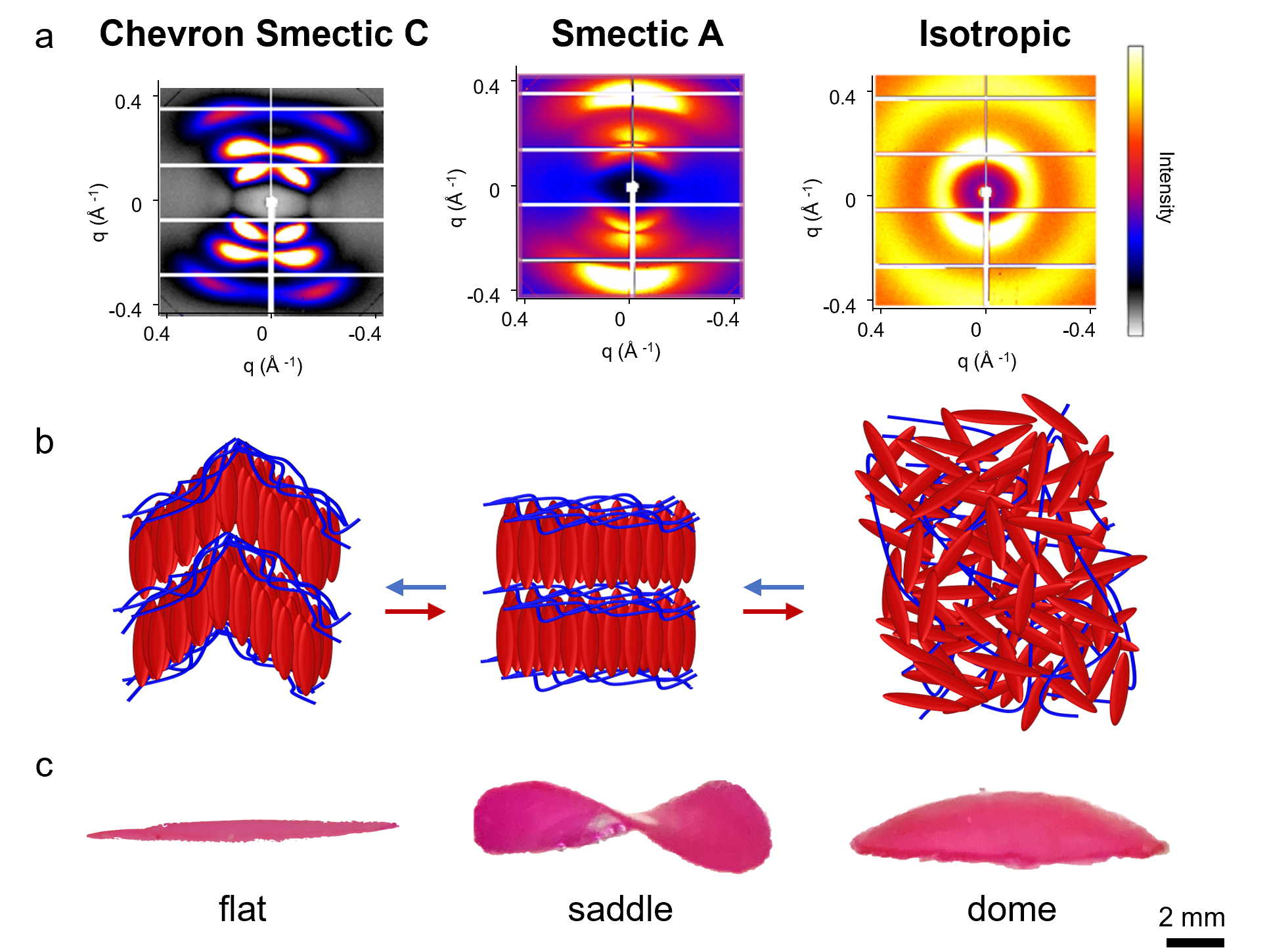Programming Liquid Crystal Elastomers for Multistep Ambi-Directional Deformability

Ambidirectionality is the ability of structural elements to move beyond a reference state in two opposite directions. Aizenberg exploited the combination of mesogen self-assembly, polymer chain elasticity, and polymerization-induced stress to design LCEs that exhibit two mesophases—chevron smectic C (cSmC) and smectic A (SmA). Kozinsky used molecular dynamics (MD) simulations to identify characteristic features and molecular configurations that correlate to Aizenberg's experimental results. They showed that Inducing the cSmC-SmA-isotropic phase transition leads to an inversion of the strain field, resulting in opposite deformation modes. This material-dependent property allows their team to design multiscale ambidirectional actuators for potential applications from biomimetic robotics to self-regulating membranes.
Article:
Shape-changing soft material for soft robotics, smart textiles, and more
Publication:
Yao, Y., A.M. Wilborn, B. Lemaire, F. Trigka, S. Li, F. Stricker, A. Grinthal, M. Zhernenkov, G. Freychet, P. Wasik, R. Bennet, T.C. Cheung, B. Kozinsky, M. Lerch, X. Wang, J. Aizenberg, "Programming liquid crystal elastomers for multistep ambidirectional deformability," Science 386, 1161-1168 (2024) ![]()
![]()
Joanna Aizenberg (Chemistry and Material Science) and Boris Kozinsky (Material Science)
2024-2025 Harvard MRSEC (DMR-2011754)
